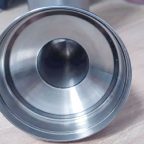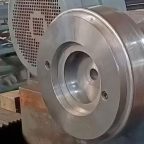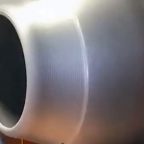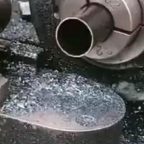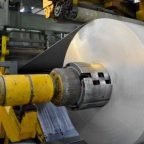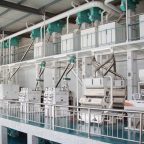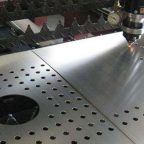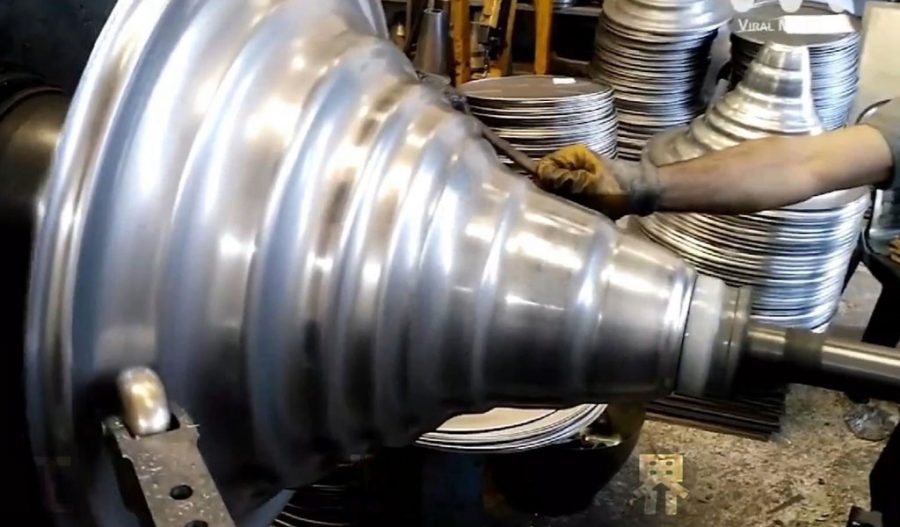
Spinning is a versatile and highly specialized metalworking process that is used to form parts from a variety of metals, including aluminum, copper, brass, titanium, and even more specialized alloys like Hastelloy® or Monel®. The process involves rotating a blank of material on a lathe or other spinning machine, while a tool is applied to shape the material into a desired form. The material is deformed through a combination of rotational forces and mechanical pressure, which results in the creation of hollow or cylindrical parts, such as cones, hemispheres, or complex geometric shapes.
One of the key phenomena that occurs during the spinning process is the reduction in wall thickness of the material being spun. This reduction is a result of the deformation mechanics involved in the process. The question of why the wall thickness decreases during spinning is multifaceted, involving principles from material science, mechanics of deformation, and the specific dynamics of the spinning process itself.
This article seeks to explore the various reasons why wall thickness decreases during spinning, with an in-depth discussion of the factors contributing to this phenomenon, including the mechanics of metal deformation, the role of centrifugal forces, strain hardening, material properties, and the specific parameters of the spinning process. It will also touch on the implications of wall thickness reduction for the design, performance, and cost of spun parts, providing a comprehensive understanding of this critical aspect of spinning technology.
The Spinning Process and Material Deformation
To understand why wall thickness decreases during spinning, it is essential to first comprehend the fundamentals of the spinning process. Spinning involves the use of a rotating disc of material, typically referred to as the “blank,” which is shaped into a final product through the application of a tool that forces the material to conform to the desired shape. The blank is typically clamped at the edges, and as the tool moves along the surface of the blank, it induces plastic deformation in the material. The deformation occurs in a circumferential direction, which means that the material is stretched and compressed in such a way that it forms a thin-walled structure.
The process is analogous to shaping clay on a potter’s wheel, but instead of a soft material, the metal is plastically deformed under high pressures. The tool used in spinning typically moves along the surface of the rotating material, applying forces that cause the metal to elongate radially outward, forming a thinner and longer wall section. The mechanical work done on the material is distributed over the surface, but due to the specific dynamics of the spinning process, this distribution is not uniform.
Centrifugal Forces and Material Flow
One of the primary reasons for the decrease in wall thickness during spinning is the action of centrifugal forces. As the blank rotates, it experiences a radial force that pushes the material outward, toward the edge of the spinning blank. This outward force causes the material near the outer edge to move in the direction of the rotating surface, stretching it in the process. As the material is forced to flow outward, the area near the center of the blank becomes compressed, and the overall thickness of the wall decreases.
The centrifugal force during spinning creates an effect known as “material flow,” which is central to the reduction in wall thickness. The flow of the material is not a simple linear process; rather, it follows complex paths determined by the geometry of the tool, the speed of rotation, and the material properties. In many cases, the reduction in thickness is most pronounced in areas of the blank that experience the greatest radial forces, typically near the edges or at points where the tool has the most influence.
As the blank rotates, the centrifugal forces cause the material to spread outward, stretching it along the radial direction. This stretching results in a thinning of the material’s wall, as the surface area increases and the volume remains constant (or decreases slightly due to material compression). The wall thickness reduction is proportional to the amount of material that is forced outward during spinning.
The magnitude of this effect depends on several factors, including the rotational speed of the blank, the geometry of the tool, the material being spun, and the extent of deformation required. The more forceful the tool’s engagement with the material and the higher the rotational speed, the more pronounced the wall thinning will be. This is particularly noticeable in processes such as centrifugal spinning, where high rotational speeds amplify the outward forces.
Strain Hardening and the Influence on Wall Thickness
Another factor contributing to the reduction in wall thickness during spinning is strain hardening, a phenomenon that occurs when a material is plastically deformed. During spinning, the material is subjected to high stresses and strains as it is worked by the tool. As the material is deformed, the dislocations within the crystal structure of the metal accumulate, leading to an increase in the material’s strength and hardness. This is known as strain hardening.
While strain hardening increases the material’s resistance to further deformation, it can also affect the way the material flows during the spinning process. In many cases, the material will flow more easily in the initial stages of deformation, as the tool first begins to shape the blank. However, as the material becomes strain-hardened, the flow of material becomes more resistant, meaning that the tool must apply greater force to continue the deformation. This can lead to uneven wall thickness distribution, as the material in regions that have undergone greater deformation becomes harder and less able to flow. In some cases, this can cause localized thinning or thickening, depending on the material’s work-hardening rate and the specific conditions of the spinning process.
Strain hardening can also affect the overall surface quality of the spun part. Since the material near the outer edge of the blank undergoes greater deformation, it can experience significant increases in hardness. In contrast, the inner regions of the part, which are subject to less deformation, may remain softer, contributing to differences in wall thickness and surface finish across the part.
Material Properties and Their Role in Wall Thickness Reduction
The material being spun plays a significant role in the extent to which the wall thickness decreases during the spinning process. Different materials exhibit distinct behaviors when subjected to spinning, depending on factors such as their ductility, strength, and strain-hardening characteristics. For instance, metals such as aluminum, brass, and copper, which are known for their high ductility, tend to exhibit more pronounced thinning during spinning compared to less ductile materials like steel or titanium.
Ductility is the ability of a material to undergo significant plastic deformation before fracturing, and it is a key factor in determining how the material will respond during the spinning process. Ductile materials are more capable of elongating and flowing without cracking, leading to greater wall thinning as the material is stretched. In contrast, less ductile materials may exhibit limited thinning due to their inability to undergo significant deformation.
The strain-hardening behavior of the material also plays a crucial role. Materials with low strain-hardening rates tend to flow more easily and undergo greater thinning, while materials with higher strain-hardening rates resist further deformation, leading to less thinning but potentially more localized work hardening.
Additionally, the temperature of the material during spinning can significantly influence its behavior. High temperatures typically reduce the material’s strength, making it more susceptible to plastic deformation. As a result, spinning processes that are performed at elevated temperatures, such as hot spinning, tend to result in less wall thinning compared to cold spinning, where the material’s strength is higher and its ability to deform is more limited.
Tool Geometry and Process Parameters
The specific geometry of the spinning tool and the process parameters play a vital role in determining the extent to which the wall thickness decreases. The tool shape, size, and design affect the forces that are applied to the material, and variations in these parameters can lead to different outcomes in terms of wall thickness reduction.
For example, the shape and curvature of the tool can influence the material flow during spinning. A tool with a sharp or highly curved edge will exert greater forces on the material, leading to more pronounced wall thinning. Conversely, a tool with a more gradual curve or blunt edge may exert less force, resulting in less thinning.
The speed of rotation is another critical parameter in the spinning process. Higher rotational speeds generate greater centrifugal forces, which in turn cause the material to flow outward more quickly. This leads to a greater reduction in wall thickness, particularly at the edges of the blank. However, excessively high rotational speeds can also lead to material failure or defects such as cracking or warping.
The feed rate, which refers to the speed at which the tool moves along the surface of the blank, also affects the degree of wall thinning. A faster feed rate allows the material to deform more quickly, resulting in less time for the material to flow and thinner walls. Conversely, a slower feed rate provides more time for the material to deform, potentially reducing the extent of thinning.
The Role of Thickness Reduction in Design and Manufacturing
The reduction in wall thickness during spinning is not merely a byproduct of the process but is often an intentional aspect of part design. In many cases, the goal of spinning is to produce parts with uniform wall thicknesses that meet specific strength and performance requirements. The reduction in thickness can be beneficial in certain applications, particularly when lightweight components are required, such as in the aerospace or automotive industries, where material efficiency is paramount.
However, the reduction in wall thickness also has implications for the final part’s strength, rigidity, and ability to withstand external stresses. Thinner walls result in lighter parts, but they may also reduce the structural integrity of the component. As such, careful attention must be paid to the design and process parameters to ensure that the wall thickness reduction does not compromise the performance of the part.
Moreover, the reduction in wall thickness also influences the cost and manufacturing efficiency of the part. Thinning walls reduce the amount of material used, which can lower the overall cost of production. However, the thinning must be carefully controlled to avoid defects or structural weaknesses, which could result in costly rework or scrap.
Conclusion
The decrease in wall thickness during spinning is a natural consequence of the material deformation mechanisms that occur during the process. Centrifugal forces, material flow, strain hardening, and the properties of the material all contribute to the reduction in thickness. The specific dynamics of the spinning process, including tool geometry, rotational speed, and feed rate, further influence the extent of the wall thinning.
While wall thickness reduction is a characteristic feature of the spinning process, it is not an undesirable phenomenon. In many cases, it is a necessary part of achieving the desired shape and performance of the spun part. By understanding the factors that contribute to wall thinning, engineers and manufacturers can optimize the spinning process to produce parts with the appropriate material properties and performance characteristics. Through careful control of the process parameters and selection of materials, spinning can be used to produce high-quality, lightweight components for a wide range of industries, from aerospace to automotive to medical applications.
Maximize Tooling and CNC Metal Spinning Capabilities.
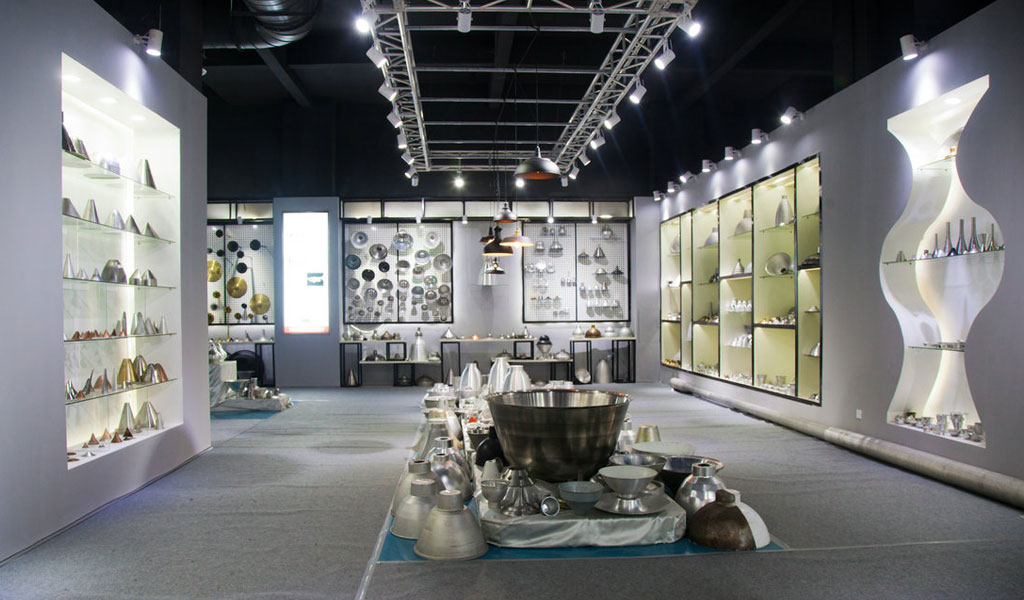
At BE-CU China Metal Spinning company, we make the most of our equipment while monitoring signs of excess wear and stress. In addition, we look into newer, modern equipment and invest in those that can support or increase our manufacturing capabilities. Our team is very mindful of our machines and tools, so we also routinely maintain them to ensure they don’t negatively impact your part’s quality and productivity.
Talk to us today about making a rapid prototype with our CNC metal spinning service. Get a direct quote by chatting with us here or request a free project review.
BE-CU China CNC Metal Spinning service include : CNC Metal Spinning,Metal Spinning Die,Laser Cutting, Tank Heads Spinning,Metal Hemispheres Spinning,Metal Cones Spinning,Metal Dish-Shaped Spinning,Metal Trumpet Spinning,Metal Venturi Spinning,Aluminum Spinning Products,Stainless Steel Spinning Products,Copper Spinning Products,Brass Spinning Products,Steel Spinning Product,Metal Spinnin LED Reflector,Metal Spinning Pressure Vessel,
